Alternatives to traditional facelifts provide a range of choices for people wanting to look younger without surgery. These options include non-surgical treatments and the latest in cosmetic procedure technology, offering various ways to get similar outcomes. Dr. Andres Bustillo, MD, FACS, shares his extensive expertise in facial aesthetics, highlighting different facelift alternatives like non-surgical methods. His knowledge helps people understand their options better, allowing them to choose based on expert advice.
Dr. Bustillo is an expert who knows a lot about the structure of the face and specializes in both non-surgical and surgical techniques. He focuses on what is safe, works well, and meets the needs of each person. His advice is very helpful for anyone thinking about options other than traditional facelifts.

Facelift Alternatives for a Fresher Look
- Botox or dermal fillers offer wrinkle reduction and face rejuvenation – surgery is not required.
- Laser treatments can improve skin texture and tone, offering a less invasive option than traditional facelifts.
- Ultherapy uses ultrasound technology to lift and tighten skin, serving as a non-invasive facelift alternative.
- Micro-needling causes collagen production. This firms skin which then seems younger. Surgery is avoided.
- In fat transfer body fat moves to the face. This procedure can return volume and youthful appearance.
Why Consider Alternatives to Traditional Facelifts
People are increasingly interested in alternatives to facelifts because they offer ways to deal with facial sagging and minimal signs of aging. This interest is partly because non-surgical facelifts don’t require the same recovery time or carry the same risks as surgical facelifts.
These alternatives are attractive for those looking for comprehensive facelift solutions that are less intense than traditional facelift surgery. They cater to individuals who are cautious about the permanent changes and the process involved in surgical facelifts.
This shift towards considering other options is due to an informed decision-making process. People are comparing the benefits and drawbacks of facelift surgery with the new and less invasive methods. Non-surgical facelifts offer customized solutions, appealing to a broad group of individuals aiming to refresh their appearance without the extensive procedures.

1. Non-Surgical Thread Lifts
Comparison with Traditional Facelifts
Thread lifts offer a minimally invasive option for those looking to tighten and lift their facial skin, contrasting with traditional facelifts that involve more extensive surgery and recovery time. Utilizing dissolvable threads, this method achieves a lift in areas such as the cheeks and eyebrows, often referred to as a ponytail lift or cheek lift. Here’s a closer look at how thread lifts compare to a complete facelift:
- Facial skin laxity targeting: Thread lifts precisely address skin laxity, providing a noticeable yet natural lift that doesn’t require the extensive downtime of traditional facelifts.
- Recovery time: Patients benefit from significantly shorter facelift recovery times, making it easier for individuals to return to their daily activities.
- Cost-effective: Compared to the expenses associated with a complete facelift, mini facelift costs are more affordable with thread lifts, broadening access to those desiring facial rejuvenation without a hefty price tag.
- Results over time: Beyond the immediate skin-tightening effects, thread lifts stimulate collagen production, contributing to further enhancements in the appearance of the skin.
2. Dermal Fillers
Comparison with Traditional Facelifts
Dermal fillers are a non‑surgical approach that restores volume and smooths wrinkles via injections of biocompatible gels, unlike surgical facelifts which reposition skin and deeper tissues under anesthesia.
- Results over time: Immediate improvement in contour and wrinkle reduction; effects last 6–24 months depending on filler type, with repeat treatments boosting collagen production for progressively smoother skin.
- Facial skin laxity targeting: Primarily addresses volume loss in areas like the cheeks, nasolabial folds, and lips, filling in wrinkles rather than lifting large amounts of sagging skin.
- Recovery time: Minimal downtime—most patients resume normal activities immediately, with only mild swelling or bruising for a day or two.
- Cost-effective: Lower upfront cost per session compared to surgical facelifts; however, maintenance treatments (every 6–18 months) are required to sustain results.

Questions about your procedure?
Schedule a consultation with Dr. Andres Bustillo.
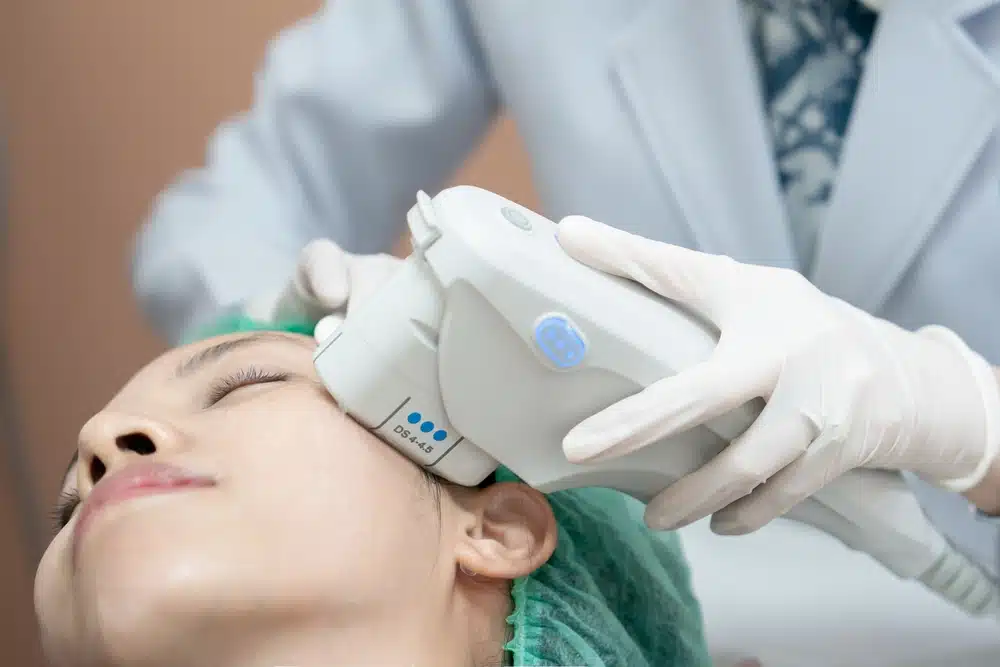
3. Ultherapy
Comparison with Traditional Facelifts
Ultherapy uses focused ultrasound energy to stimulate collagen deep within the skin and SMAS layer—similar target planes to surgery—but without any incisions or downtime.
- Results over time: Gradual firming and lifting over 2–3 months as new collagen forms; effects can last up to 2 years, with maintenance sessions extending longevity.
- Facial skin laxity targeting: Tightens and lifts lax skin on the brow, under‑chin, neck, and décolletage by triggering your body’s natural collagen‑remodeling process.
- Recovery time: Virtually none—some patients experience mild redness or tingling for a few hours, but can return to work or exercise immediately.
- Cost-effective: Mid‑range cost—more expensive than injectables per session, but generally only one treatment is needed for initial lift, with touch‑ups every 12–18 months.
4. Laser Skin Resurfacing
Comparison with Traditional Facelifts
Laser resurfacing resurfaces the epidermis and heats deeper dermal layers to promote collagen, improving texture and tone without cutting or lifting tissue.
- Results over time: Noticeable smoothing of fine lines and improved tone within weeks; collagen remodeling continues for up to 6 months, and results can last 1–2 years with proper skincare and sun protection.
- Facial skin laxity targeting: Improves mild to moderate laxity by tightening superficial skin and stimulating collagen, but does not reposition deeper structures as a facelift does.
- Recovery time: Depends on intensity—ablative lasers require ~5–7 days of redness and peeling, while non‑ablative options have 1–2 days of mild swelling and redness.
- Cost-effective: Generally less costly than surgical lifts; cost varies by laser type and number of passes, with occasional repeat treatments (once a year or as recommended).

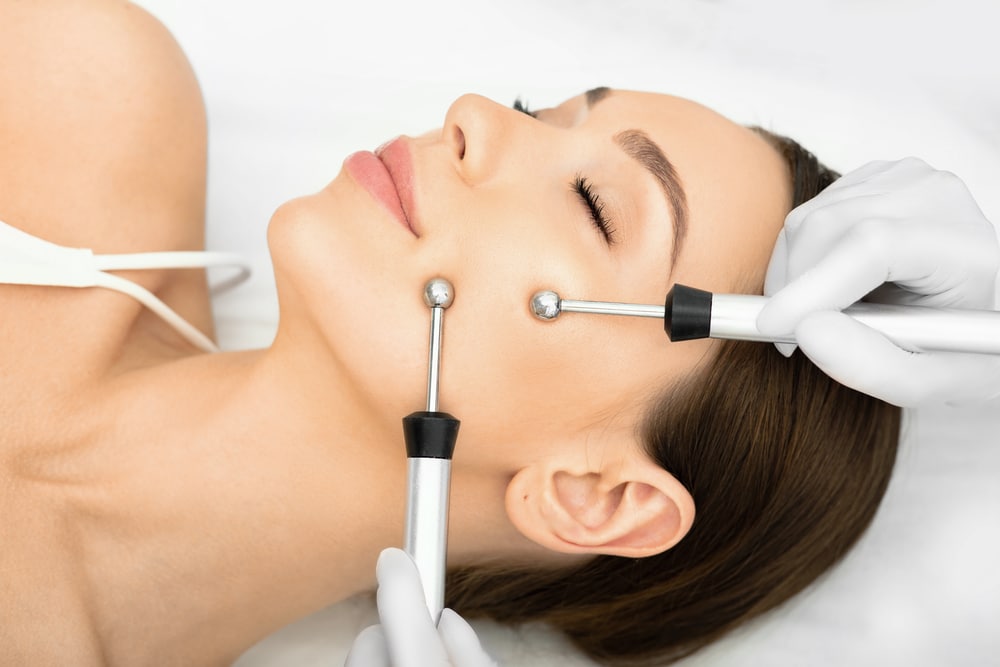
5. Microcurrent Facelift
Comparison with Traditional Facelifts
The Microcurrent Facelift, a non-invasive procedure for facial rejuvenation, stands apart from traditional facelifts, which require surgery to correct sagging skin. Here’s a closer look at how it compares:
- Facial skin laxity targeting: Utilizes low-level electrical currents to tighten lax facial muscles, offering an internal lift without surgical intervention.
- Recovery time: One of its most significant advantages is the negligible recovery time, allowing individuals to immediately resume daily activities, unlike more invasive facelifts.
- Effectiveness: While gentler than surgical alternatives, this method effectively promotes collagen and elastin production, leading to smoother, wrinkle-free skin over time.
- Comparative advantages: When compared to other techniques like the ponytail facelift, which focuses on elevating certain facial areas, or the stem cell facelift, known for using one’s cells to improve skin quality, microcurrent facelifts offer a unique, gentle yet effective approach to facial rejuvenation, suitable for those seeking a less invasive option.
6. Deep Plane Facelift
Comparison with Traditional Facelifts
Deep Plane Facelifts provide comprehensive rejuvenation by adjusting deeper facial structures, contrasting with traditional facelifts that may focus more on the surface level. Here’s a closer look at how deep plane facelifts compare to traditional facelifts:
- Facial skin laxity targeting: Targets both skin and muscle layers for a more profound and natural-looking lift, offering a more extensive treatment than thread lifts.
- Recovery time: Requires a longer recovery period than less invasive alternatives like thread lifts, due to the more complex surgical approach.
- Cost-effective: Generally more expensive due to the intricate nature of the procedure but offers lasting results that might outweigh the initial investment.
- Results over time: Provides long-lasting, substantial improvements in facial aesthetics, with effects enduring longer than those of less invasive procedures.
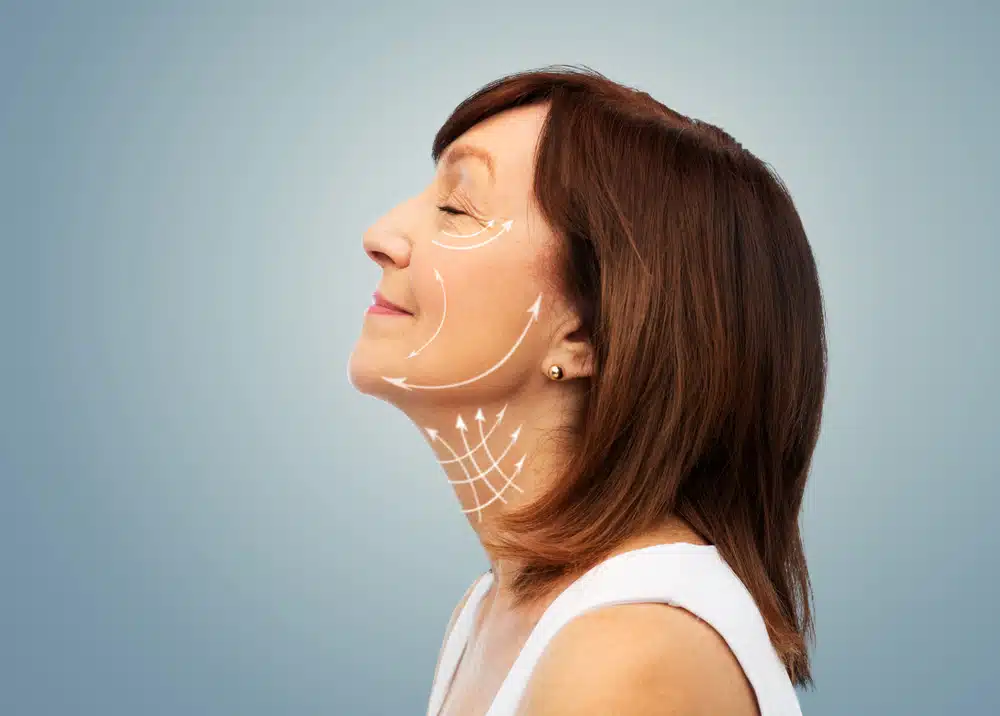

7. Mini Facelift
Comparison with Traditional Facelifts
Mini Facelifts, designed for targeted improvements, offer a middle ground between extensive surgical facelifts and minimally invasive procedures. Here’s how they compare to traditional facelifts:
- Facial skin laxity targeting: Focuses primarily on the lower face and neck, offering more substantial results than non-surgical methods but less extensive than full facelifts.
- Recovery time: Shorter than traditional facelifts, appealing to those seeking significant results with less downtime.
- Cost-effective: More affordable than a complete facelift while providing more noticeable results than non-surgical options.
- Results over time: Offers a balance of noticeable, lasting effects, though not as enduring as more extensive facelift procedures.
8. Liquid Facelift
Comparison with Traditional Facelifts
Liquid Facelifts, using injectable treatments, present a non-surgical alternative to traditional facelifts for facial rejuvenation. Here’s their comparison:
- Facial skin laxity targeting: Primarily addresses volume loss and wrinkles, offering immediate improvements without altering underlying structures.
- Recovery time: Minimal to no downtime, making it an ideal choice for those needing quick, noticeable changes without surgery.
- Cost-effective: Requires ongoing treatments for maintenance, but each session is less costly than surgical alternatives.
- Results over time: Provides temporary enhancements, with the need for periodic re-treatments to maintain the effect.

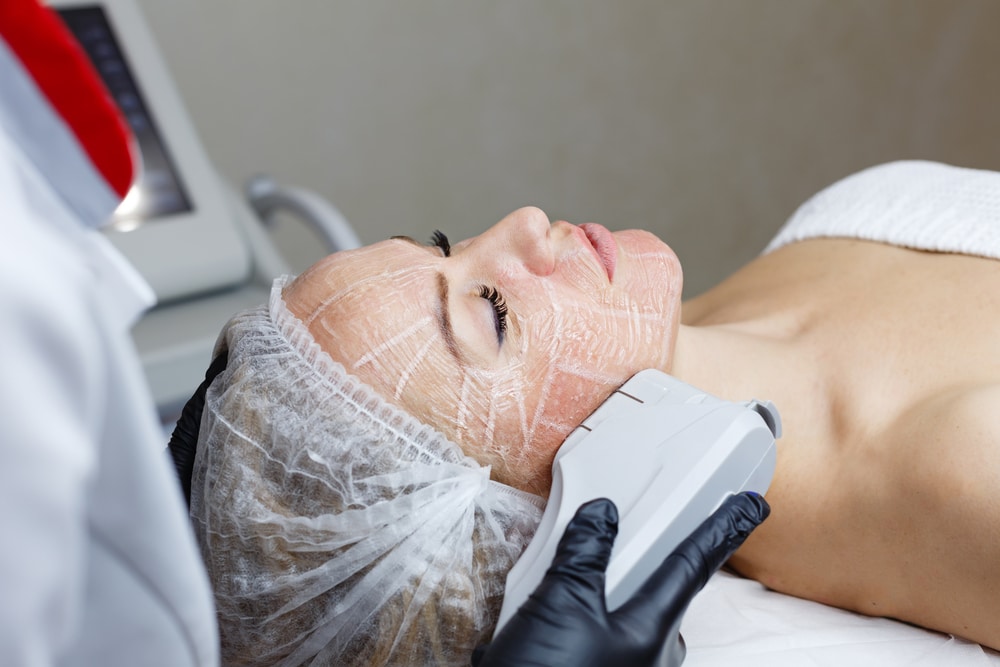
9. Smart Lift Facelift
Comparison with Traditional Facelifts
The Smart Lift Facelift, often involving laser technology, is a less invasive surgical option compared to traditional facelifts. Here’s how it compares:
- Facial skin laxity targeting: Offers a considerable lift with smaller incisions, focusing on skin tightening and subtle lifting.
- Recovery time: Provides a quicker recovery compared to traditional facelifts, suitable for those seeking noticeable results with limited downtime.
- Cost-effective: More affordable than traditional facelifts, making it accessible for a broader range of patients.
- Results over time: Yields lasting results that are more pronounced than non-surgical methods, but may not be as extensive as those of traditional facelifts.
Preparation: Discussing Medical History and Consultation
Choosing the right alternative to a traditional facelift involves looking at various options and finding one that suits your needs and expectations. Options like a mini facelift, mid facelift, liquid facelifts, weekend facelift, and ponytail facelift cater to different aesthetic goals and levels of procedure invasiveness.
Talking to a skilled facelift plastic surgeon or a double board-certified facial plastic surgeon is important. These facial plastic surgeons have the necessary experience to evaluate your facial structure, talk about your cosmetic goals, and recommend the best course of action. They use a wide range of technology and apply their extensive experience in cosmetic surgery to offer personalized care.
The cost of these alternatives can vary a lot, with factors like the types of facelifts, surgeon’s expertise, and the location of the practice affecting the price. Traditional facelift surgery is often seen as a more permanent solution but is usually more expensive than less invasive options such as mini facelift or liquid facelifts.
Schedule a Consultation Today!
Facelift procedures are not the same for everyone. Considering the different types of facelifts is just the beginning. You should also think about what kind of enhancements you want, from small changes to more noticeable ones.
- Treatment Plan: Creating a detailed treatment plan that matches your aesthetic goals is key. This helps you make confident decisions about the procedure.
- Consultation: Have detailed talks with possible surgeons to get a sense of their approach and how much experience they have with facelift alternatives.
- Individual Experiences: Keep in mind that results can differ from person to person, so pick an option that fits well with your personal goals and lifestyle.
By considering these factors, you can choose a facelift alternative that not only meets but might exceed your expectations for improving your appearance.
If you’re looking into different ways to refresh your look without going for a traditional facelift and want results that look natural, getting advice from a Facelift qualified surgeon like Dr. Andres Bustillo is essential. Dr. Andres Bustillo, MD, FACS, is a highly experienced facial plastic and reconstructive surgeon. With over 20 years in the field and board certification, he has assisted many people in achieving the look they want. Dr. Bustillo is well-known in Miami, FL, for his thorough explanations and customized care.
To explore the most suitable facial rejuvenation options for you, consider setting up a meeting with Dr. Bustillo.
FAQ about Alternatives to Facelift
Still curious about the alternatives to traditional Facelift. The following are some frequently asked questions.
What is the expected duration of results from non-surgical facelift alternatives like thread lifts and dermal fillers?
The duration of results from non-surgical facelift alternatives varies depending on the treatment. For example, results from dermal fillers can last from 6 months to 2 years, depending on the type of filler used and the individual’s response to the treatment. Thread lifts typically offer results that can last anywhere from 1 to 3 years. Both treatments may require periodic touch-ups to maintain their effects.
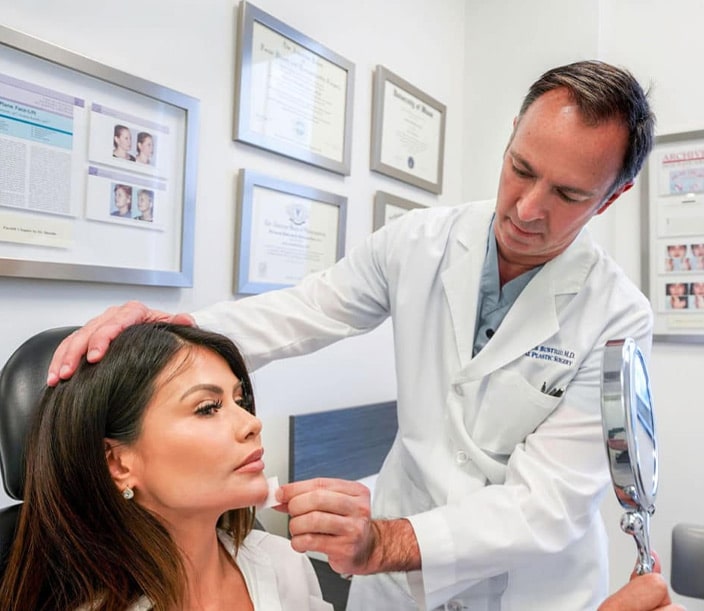
How often should non-surgical treatments like Ultherapy and laser skin resurfacing be repeated to maintain results?
Ultherapy results can last up to 2 years, and it’s generally recommended to undergo a touch-up treatment every 12 to 18 months to maintain skin tightness. Laser skin resurfacing results can vary; some people might see long-lasting effects while others may require annual treatments. The frequency can depend on the type of laser used, the area treated, and individual skin characteristics.
Are there any specific lifestyle changes or follow-up treatments recommended to enhance and prolong the effects of non-surgical facelift alternatives?
To enhance and prolong the effects of non-surgical facelift alternatives, it’s recommended to follow a healthy lifestyle, including maintaining a stable weight, eating a balanced diet rich in antioxidants, and avoiding smoking and excessive sun exposure. Regular use of high-quality skincare products tailored to your skin type, including sun protection and possibly retinoids, is also beneficial. Some practitioners may recommend combining treatments, such as using laser therapy alongside fillers, for more comprehensive results.
Can non-surgical facelift alternatives be combined with each other for more comprehensive results, and what are the recommended combinations?
Yes, non-surgical facelift alternatives can often be combined to achieve more comprehensive results. For instance, combining Ultherapy with dermal fillers can enhance overall facial rejuvenation by tightening the skin and restoring lost volume simultaneously. Another effective combination is using laser resurfacing to improve skin texture and tone while using Botox to reduce the appearance of dynamic wrinkles. It’s important to consult with a skilled practitioner who can tailor these combinations to your specific aesthetic goals and skin needs.

